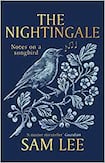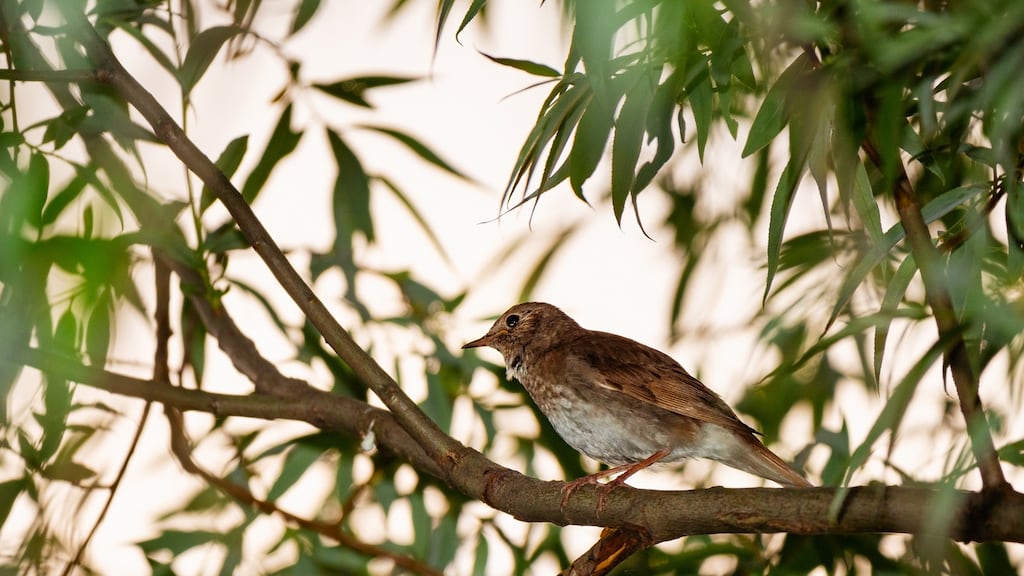
My favourite form of natural history note is where wildlife observations are confirmed by the butler. In a 1955 communication to The Irish Naturalists’ Journal, Mary Barry from Ballygoran, Co Kildare, reports a probable occurrence of a nightingale (Luscinia megarhynchos) in that county.
A Mr Flynn and his wife heard the bird on May 6th that year on Carton Estate, Maynooth. Three nights later they returned with the butler who also heard the bird’s distinctively ornate song. After a close questioning of all parties, the observation was validated by a Fr Kennedy from Rathfarnham Castle, Dublin.
This paper, entertaining though the account of the punctilious verification of the bird’s identity is, must surely be one of the more subdued literary memoirs of this songbird. Nightingales are but very occasional visitors to Ireland, with records suggesting their occurrence here at most a few times a year.
Nonetheless, even those of us living outside the geographical range of this bird – roughly Europe, parts of Asia, and North Africa – can’t help but spend our lives within earshot of the nightingale. This is because the nightingale’s song has had an outsized influence on popular culture: it inspires tunes, songs, stories, poems, classical compositions and so on. No birdsong, with the possible exception of the blackbird’s, has reverberated around the world as thoroughly as that of the nightingale’s.
Sam Lee – the English folk singer, song collector, broadcaster, activist and now author – has organised nightingale events around Britain for several years. In May 2014 Lee commemorated the 90th anniversary of the BBC broadcast of cellist Beatrice Harrison’s duet with a nightingale in a memorable broadcast of his own.
I first encountered Lee’s work as part of an ongoing research project with my student Alexandra Duerst where we have been attempting to characterise songs across the genres – pop, progressive rock, funk, dance, tech house, and, of course, folk – that incorporate recorded birdsong (we’ve paused at around 100 songs). Representative Sam Lee songs on our playlist include My Ausheen and The Tan Yard Sign. What distinguishes Lee’s contribution to the songs on our list is that he duets directly with the singing bird – a nightingale – rather than using, as is more typically the case, recordings made for other purposes.
In The Nightingale: Notes on a Songbird, Lee deepens his kinship with the eponymous bird by writing a polyvalent account of this polytonal creature. As a song collector, Lee is in an exceptional position not only to catalogue the bird’s influence on traditional culture, but also to reflect upon the resonance of the nightingale for some deeper currents within human culture.
“I wonder,” he writes, “whether the thrust northwards of humankind, and the way we forged the landscape as we progressed, brought the nightingale with us.” If this is true – that the human modification of landscapes along our primordial migratory routes produced landscapes in which, until recently at least, the nightingale could flourish – then this symbiosis might provide a benevolent model for our relationship with the wild. It’s one that we might want to resurrect.
In this book Lee succeeds extravagantly in revealing an indebtedness we have to the nightingale for its gift of music and for the creative stimulus it provides for many moods from the amorous, the awestruck to the deeply melancholic.
There is a folk song type in which lyrics take on an accumulating form. For example, a version of the familiar song The Tree in The Wood, recorded in the early 20th century by song collector Cecil Sharp, goes as follows: “And the tree growed in the Merryshire wood./And on the tree there was a limb/And on that limb there was a branch/…”
For Lee this cumulative form provides a metaphor of those circles illuminated by campfires of antiquity, and of the “spiraling geometry…deep within our creation stories”. The nightingale might be the archetypal circle bird: “within those woods is the bird,/within the bird is the song…”
The notion of an accumulating song, growing fractally, expanding in both detail and complexity, also provides a good metaphor for the structure of The Nightingale: Notes on a Songbird. It’s a book that starts out simply enough, but as we proceed it’s as if we’ve strolled in eventide to the edge of the thicket, and then as the dark descends, the music starts, and we become absorbed in all the strangeness of the night.
The opening chapters straightforwardly introduce our bird. These chapters consist of sturdy natural history facts, distributional details, and they point us to where one might find nightingale populations.
If the book had continued in this vein I would be recommending the volume to you as a sturdy companion for field ventures or as a charming guide for the armchair naturalist. But the chapters at the core of the book, where Lee discusses the cultural reach of the nightingale’s song, are engrossing on another level.
In these chapters are accounts of Beatrice Harris and her BBC recordings, of folk celebrations, of bringing the spirit of the nightingale to Berkeley Square, and of traditional songs and the extraordinary singers and families who keep them alive. Those who listen to the audio-version, which Lee narrates, will hear him sing some captivating songs. (Lee’s singing voice is a marvel of its own – there is something of the nose in it, but its sweet and mournful and seems multi-tonal in a complex manner best left to anatomists to explain).
The concluding chapter outlines a strategy for the conservation of this beleaguered bird. This, of course, is a sad and urgent note, for the fate of nightingales in the United Kingdom is uncertain. Despite protection there has been a contraction in the bird’s range. How disconcerting it would be if the nightingale disappeared from that part of the bird’s range that gave us the most famous ode ever written to a bird.
There was always a danger of this being ultimately a deflating volume, one that laments the passing of a world, a book mired in nostalgia and regret. Undoubtedly there is some of that here. In an epilogue that reads like the last elegiac musical notes of the night, Lee records that his song collecting endeavours are coming to an end. He had spent several years traipsing about Ireland and Britain collecting songs, especially from Traveller families. But the work had become harder and more dispiriting.
“I was spending weeks on end pinballing across Ireland mostly, knocking on the doors of old people, to be told too often that I was ‘months too late – if only you’d come sooner, poor Mary, God rest her soul, had all the old songs’.” Thus, loss pervades the text: loss of feral landscapes, loss of traditional farming practices, loss of the old singers, and loss of nightingale populations.
For all of that, nostalgia is not the book’s dominant key. Rather, this is a hopeful book, but, more than that, it is one that doesn’t leave us feeling like later-comers to the concert. The world is fresh with possibilities, with new projects, new actions – some of which stanch the losses, but most of which celebrate being alive in a self-renewing world. Appropriately Lee dedicates the book to Oran Summer Cecilia Lee, his daughter born in 2018 and to the next generation of listeners.
Liam Heneghan is professor of environmental science at DePaul University, Chicago











